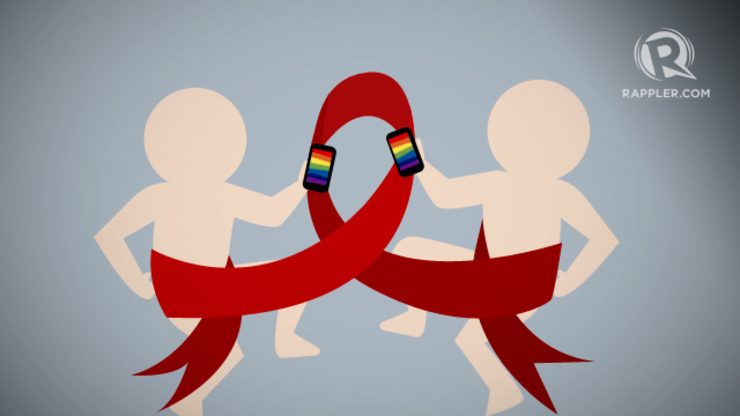SUMMARY
This is AI generated summarization, which may have errors. For context, always refer to the full article.

JAKARTA, Indonesia – “They have a secret life. Yes they are married, but they still want to have sex with other men,” said Amahl Azwar, an openly gay writer based in Jakarta.
These Indonesian men don’t want to be called gay or bisexual, but they do want to explore or experiment.
On apps like Grindr, Scruff and Hornet, they find sexual partners. On their smartphone screens, they see other members around them – some openly gay men, some who are still in the closet, and others like them who don’t want to be labeled but want to have sex with other men. (READ: Phone app use for gay sex linked to disease risk)
“After chatting, they usually set a blind date or what we call kopdar (a slang term derived from kopi darat),” he said.
If they’re both comfortable with each other, the date ends with sex. And nothing more usually follows.
“They just want to have sex,” Amahl said.
High risk
The problem is that HIV is spreading fastest among this group simply called “men who have sex with men” (MSM).
HIV infections among men who have sex with men (MSM) have gone up from 2.4% in 2002 to 12.4% in 2011
While new HIV infections in Indonesia have been declining among people who inject drugs and stabilizing among female sex workers, government data shows it’s going up among MSM.
According to Tono Permana Muhamad, the national coordinator of the Gay, Waria (Transgender) and Other MSM Network (GWL-INA), HIV infections among MSM have gone up from 2.4% in 2002 to 5.3% in 2007 to 11.5% in 2009.
It was at 12.4% nationwide in 2011, according to the most recent Integrated Biological- Behavioural Surveillance (IBBS) report.
Worse, in Jakarta and Bali, Tono said infection rates can go as high as 19% – which means one out of every 5 men in this group are HIV positive.
By contrast, official data shows HIV prevalence in Indonesia overall is 0.4% on average. The highest overall rate is in Papua at 2.3%, where it is considered a low generalized epidemic.

The case for condoms
Axl (not his real name), a 27-year-old artist in Jakarta, mentally went through the list of the men he has slept with, trying to figure out who gave him HIV, but he drew a blank.
“Even if I ask them one by one now, I’m not sure they are going to admit it,” he told Rappler.
He took a deep breath, then explained he was never able to decide for himself whether to use a condom or not. He never felt he had the right to.
“I’m fat,” he said. He was afraid of rejection.
“So when I’m asked not to use a condom, I follow.” The regret was audible in his voice.
Now, he’s careful. Condoms are a must. “I don’t want to infect another man with this virus,” he said. “From the start, I tell my sex partner that I am HIV-positive.”
But HIV workers like Tono want to make sure MSM start practicing safe sex before they get HIV. Not after.
Difficult to reach
“Gay men and waria (transgenders) are easy to reach if they are open. But MSM, especially those who have female partners for example, it’s really difficult,” Tono said.
‘In this age, we use social media to reach the hidden MSM’
“Ten years ago, we would reach them by approaching them in the park. But now, there’s more than 100 sexual media websites where people can find other people to have sex with.”
To reach them, Tono said they too went online. “In this age, we use social media to reach the hidden MSM,” he said.
For example, he said some of the patients who go for HIV tests at the Bali Medika Clinic say they learned about it from Facebook.
He also helped create a website called brondongmanis.com (which means sweet young men) targeted to young people. The site, which talks about issues such as how to come out, sex, tattoos, bullying, and of course HIV, reached 30,000 people in only a month, he said.
Another good campaign was the CONQ webseries by filmmaker Lucky Kuswandi. The 6-episode series on YouTube features a gay couple who met on Grindr, one of whom is HIV positive.
“When one of the partners went to get tested for HIV, visits to the Ruang Carlo clinic (shown in the episode) increased by 50%,” Tono said.
The dating app Hornet includes information on AIDS and on whether a user has HIV or not.
“There is evidence that outreach by social media works, but there’s no evaluation yet,” Tono said.
Growing awareness
There is growing awareness of condom use among the homosexual community in Indonesia, according to Amahl.
In “saunas” frequented by homosexuals and other MSM, Amahl said, free condoms are placed in lockers.
Posters promoting safe sex are also seen inside the saunas.
“Sometimes, HIV workers come to saunas and talk about it with the people there,” he said.
But it’s not easy convincing people. “Most of them still argue that condoms affect their sexual satisfaction,” Amahl said.
There’s also the inferiority issue that Axl experienced. According to Amahl, there’s always a dominant and inferior partner in such sexual relationships. The decision to use a condom depends on the dominant one.
And there are those like Esa (not his real name), a 27-year-old office worker in Jakarta, who still don’t believe condoms are necessary all the time, even though he’s already had an HIV scare.
“The most important thing is that my boyfriend is loyal and promises not to have sex with another man,” he said. – Rappler.com
Image via Shutterstock
Add a comment
How does this make you feel?
There are no comments yet. Add your comment to start the conversation.